DRAFT: Preliminary internal document in review/ Do not cite
This is an internal website intended to capture current approaches and knowledge base from the Natural Sounds & Night Skies Division in order to provide guidance to the field in an easy, user friendly format. It is still under development and this version was made available solely for this internal review. Following review, and prior to formal internal agency vetting, pages will be inactivated in order to incorporate input.
6. Common Noise Sources and Mitigation
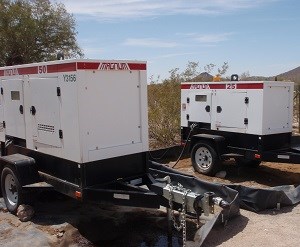
6.1 Park Operations, Concessions and Contracting
Many activities that parks undertake to maintain, manage, and operate produce noise. These activities might include landscaping (lawnmowers, leaf blowers, etc.), facilities and maintenance (HVAC systems, chainsaws, etc.), transportation (administrative overflights, vehicle fleets, shuttle buses, road resurfacing, etc.), construction, natural and cultural resource management, and concessions operations.
Making gradual and simple shifts in purchasing, operations, and maintenance decisions can lead to significant improvements in a park's acoustic environment. These ideas fall into two main categories: best available technologies (BATs) and best management practices (BMPs). BATs and BMPs should be included in park operation plans, purchasing plans, concession agreements, commercial use agreements, construction contracts, and other similar arrangements.
BATs offer an opportunity to use newer, quieter, more efficient, or more appropriate equipment for a task. For example, when considering replacement of a fleet vehicle, parks should purchase the quietest choice that will meet their needs. Currently, many quiet vehicles also produce less carbon dioxide and other emissions than others, so parks can accomplish acoustic resource management goals at the same time as climate change management goals. The Acoustical Toolbox: Recommendations for Reducing Noise Impacts in National Parks [PDF] also offers alternatives for landscaping equipment, a variety of saws, heavy machinery, and construction equipment.
Another resource offering practical suggestions for reducing noise is the National Academy of Engineering's Protecting National Park Soundscapes, which was published in 2013 and was developed during a workshop hosted by the National Park Service. This resource includes BATs and BMPs for reducing noise from park operations either at the source, by interrupting the path, or protecting the receiver. A very effective BMP is purchasing equipment that utilizes BAT. That is, it is smart practice to purchase equipment with the best available technology and to include those goals in purchasing plans.
A commonly identified BMP is regular maintenance of mechanized equipment. Well-maintained equipment works better, is more efficient and produces less noise than poorly maintained equipment. Other BMPs include timing noise-generating activities during periods when they will create fewer impacts, using acoustic barriers when appropriate, and choosing non-mechanical solutions. Additional details on these BATs and BMPs can be found in the resources listed in this section.
6.2 Aircraft
Aircraft overflights are a common noise source in national parks. Aircraft noise originates from military, commercial, general aviation, and air tours. It is important for parks with commercial air tours to understand how to address these overflights and the noise they generate within the overall scheme of acoustic resource management. Although uncontrolled access to the airspace above parks may impair acoustic resources and visitor experience, NPS does not have the legislative authority to regulate airspace. In these instances, the NPS coordinates with the Federal Aviation Administration (FAA) and Department of Defense (DOD) to help protect park resources.
Air tours
At some parks, air tours are a major contributor to aircraft noise. See the annual operations reports for tours over parks (excluding Grand Canyon NP, Rocky Mountain NP, and Alaskan parks).
Two different laws address the management of commercial air tours over NPS units. The Overflights Act of 1987 [PDF] addressed, amongst other things, flights over Grand Canyon NP and paved the way for future legislation. The second law, The National Park Air Tour Management Act of 2000 (NPATMA), governs flights over all NPS units, excluding Alaska parks and Grand Canyon NP. Additionally, under this act, commercial air tour operations are prohibited over Rocky Mountain NP. While these laws do not apply to NPS units in Alaska, it is well known that air tours regularly take place over Alaskan parks. Monitoring and mitigating the noise impacts of air tours is important for parks, particularly because social science research suggests that park visitors respond with high levels of annoyance when exposed to overflights (Anderson G.S. et al. 2011, Rapoza et al. 2015). The FAA and NPS are working with air tour operators to mitigate impacts. NPS has developed a specific framework for assessing and mitigating impacts of air tour noise on wilderness character (McKenna et al. 2016). The Overflights Program can assist parks with air tour management.
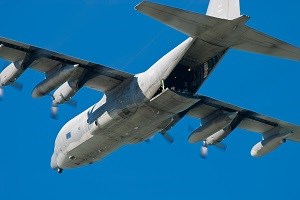
Military Overflights
An estimated 150 national park units lie beneath military training routes and special use airspace, presenting a complex challenge for park managers charged with preserving park resources. Recognizing the critical importance of both the Department of Defense and the NPS missions, the agencies have been working closely together to improve communication and facilitate early problem identification and resolution. The Overflights Program provides assistance to parks by negotiating with Defense Department agencies to mitigate impacts of low level overflights and review proposed military airspace modifications, aircraft beddown proposals, and other related military airspace training actions for impacts to soundscapes. NPS involvement in the early planning stages of these projects has resulted in avoidance of impacts altogether or changes to the proposal that mitigated impacts of military overflights to acoustic resources.
Sequoia and Kings Canyon National Park stands as an excellent example of how park managers can help to reduce the impact of military overflights by working closely with their military counterparts. An informative article [PDF] presented at the George Wright Society outlines the park's sustained efforts to improve communication and coordination with the Department of Defense.
Unmanned Aircraft Systems (UAS)
UAS (sometimes called drones) have emerged as a management issue in national parks. After several incidents of UAS crashes and wildlife harassment, NPS issued 2014 Unmanned Aircraft Interim Policy Memorandum (also see news release), which prohibited recreational use of UAS in national parks. This restriction is in place until the effects and benefits of UAS use are better understood. NSNSD is participating in resource protection discussions and scientific research regarding UAS use in national parks.
The 2014 memo included exceptions to allow the use of UAS for administrative and research purposes. More information on the use of UAS use can be found in RM 60 Aviation Management [PDF] (see Chapter 17), which includes a template in Appendix 7 for obtaining approval to use UAS for admin or research missions. A set of best practices (link) has been developed for avoiding impacts to natural, cultural, and historic resources when using unmanned aircraft systems.
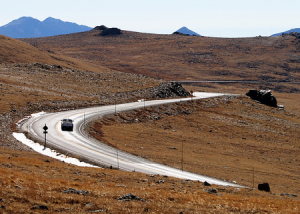
6.3 Transportation
One of the most pervasive noise sources affecting national parks is transportation noise. Transportation noise includes noise from air tours, general aviation, nearby road networks and transportation systems within parks. Transportation should be considered in soundscape management plans; similarly the effects of transportation noise should be considered in transportation plans. Transportation plans should include strategies to reduce noise like the use of quiet pavement and quiet tires or transition to park shuttle systems. The 2013 Blue Ridge Parkway GMP [PDF] offers some ideas of incorporating soundscape management into planning goals.
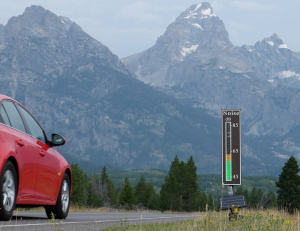
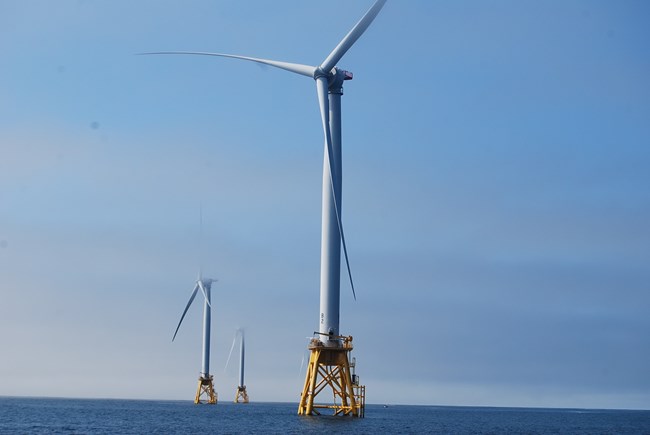
6.4 Energy Development
Renewable energy development, including onshore and offshore wind farms, and solar farms, is booming in the United States. Much of this development is occurring on public lands adjacent to or near national parks. Some renewable energy projects, when fully developed, will be the largest of their kind in the world. Although these large-scale projects help reduce our carbon footprint and build resilience, both at home and abroad, against the impacts of climate change, they do have the potential to affect natural and cultural resources, in particular by introducing noise and light impacts. By working with neighbors and developing partnerships with federal agencies and other stakeholders, you can better protect park resources from noise associated with all types of energy development.
Energy sources are often sorted into two broad categories: conventional (oil, natural gas, coal) and renewable (wind, solar, hydro, tidal). The development of all kinds of energy can impact park resources. With conventional sources, noise is emitted during the extraction phase (mining, drilling, or pumping), the materials transmission phase (mechanized pump stations and pipelines), and the generation phase (power plants and electric transmission lines). Energy development requires large quantities of raw materials including sand, gravel, and water and the removal of waste and byproducts from drilling, production, and transmissions. Often noise from increased truck and rail traffic supplying the facilities and removing waste can have negative effects on park resources. Some mitigation can be accomplished by working with stakeholders to site these noise sources further from national park units, redirecting truck traffic, timing noise-generating activities to daytime hours, or through physical actions such as acoustic barriers or sound mufflers.
Noise from renewable energy development can occur during the construction phase (dams, wind farms or solar farms), the generating state (wind turbines, dam gate operations), and transmission phase (transmission lines, pipelines). Wind farms can have hundreds or thousands of wind turbines, some reaching heights of 800 feet. These turbines require lighting at night at various heights in areas that previously had minimal artificial light. Primary noise concerns associated with wind farm construction and operation include onshore generators and sub-stations, drilling into the ocean floor for the turbine towers, offshore sub-stations, and onshore/offshore transmission lines. Mitigation strategies for renewable energy include siting, timing, applying best available noise and light reducing technologies, and reducing the quantity and size of developments where possible.
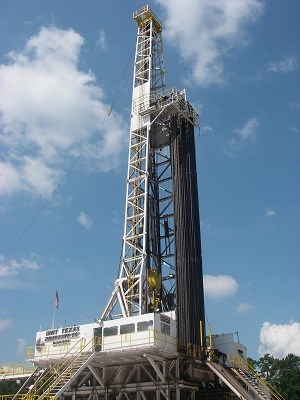
6.5 Mitigation Opportunities
There are some main sources of noise in parks and some known mitigation activities that will help in developing mitigation strategies. The main sources of noise affecting national parks are facilities operation and maintenance, construction, and transportation. The 2013 report produced by the National Academy of Engineering called "Protecting National Park Soundscapes" summarizes noise issues and identifies best available technologies and best management practices for protecting acoustic resources in national parks.
In the report, NPS and NAE identify best practices and technologies designed to help park managers, contractors and concessionaires reduce noise from within parks. Examples include changing park maintenance practices, purchasing low-noise products, using noise enclosures during construction, timing or locating noise-producing work in order to reduce impacts, and outreach to visitors, such as the traffic noise display. The outline of recommendations included in the NAE document offers a large suite of activities parks can undertake to mitigate noise. Any of these can be included in planning documents in order to achieve acoustic goals and objectives.
Noise mitigation strategies fall into three major categories: limiting the noise at the source, interrupting the path of noise, or limiting how readily the noise reaches a sensitive receiver.
Source
Often the most effective and efficient ways to mitigate impacts is to reduce noise emissions at the source. Whenever possible, quiet technology should be used in place of noisier equipment. For example, where appropriate, electric lawnmowers would be preferable to gas powered. For more information on purchasing low noise products, see data from the Noise Pollution Clearinghouse, and NSNSD's Acoustical Toolbox [PDF]. Regular maintenance of equipment and ensuring that appropriate mufflers and other noise reducing features are installed are also effective ways of minimizing noise.
Path
A primary method of reducing impacts from noise is to physically separate the noise source from sensitive receivers. This is accomplished by introducing a barrier or physical feature along the path of the noise. Common barriers include noise enclosures, walls, or curtains. Although the effectiveness may be limited, other natural barriers such as topographic features and vegetation can be used to reduce noise impacts.
Receiver
If noise reduction cannot be achieved through mitigations at the source and path level, then the negative impacts of noise can be reduced by affecting the exposure of the receiver (e.g. human, wildlife) to the noise. This can be achieved by lengthening the distance between noise source and receiver, offering hearing protection or noise insulation for the receiver, or timing noisy activities when the receiver is not present or less sensitive.
Mitigation strategies will vary based on a park's particular situation, but the best strategies will incorporate as many best practices and technologies as is feasible.
RM-47 Home
Next Chapter 7: Education
Appendix A: Glossary
Appendix B: Authorities
Last updated: May 13, 2024
